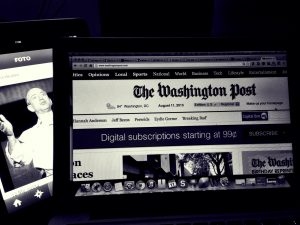By NATE DERRENBACHER
On Saturday, Nov. 11, ESPN’s “College GameDay” came to UM’s Coral Gables campus for the first time in the show’s history – following one of the strongest football seasons in recent Hurricanes’ history.
The event not only sparked school spirit and excitement around UM’s football program, but it also brought to light who are true Hurricane fans and who are just hopping on the bandwagon. Starting on Wednesday, Nov. 8, ESPN crews began flooding campus, setting up all of the equipment and activities associated with “College GameDay.”
Although exciting for many, one thing became very clear – the news media will follow stories that are relevant and cater their opinions based off that relevancy. ESPN led into and opened the show with suggestions that the Miami Hurricanes just “got lucky” during the rest of the season and that they have finally met their match against Notre Dame – a team ranked higher than the Hurricanes before the match up.
Almost everyone other than die-hard Miami fans thought there was no possibility of the home team securing a win and rising in the polls. But then it happened. Following the Hurricanes’ monumental win, news media outlets such as ESPN immediately began to change their position on the game, saying “The U is back baby!”
In the era of “fake news,” biased reporting only gives fuel to the pandemic of labeling any story as “fake news” simply because one disagrees with the points and facts presented. Although ESPN’s “College GameDay” is a program that is heavily based off predictions and opinions surrounding each team playing on any given weekend, it brings a larger problem to light.
People across social media and other news outlets – both local and national – began changing their views and the way they reported their stories following the win. Sports are a difficult topic because everyone has their favorite teams and everyone wants to be a part of the winning spirit, even if that means ‘bandwagoning’ and following a team based on its success.
Although this is a common practice in sports, it gives people a new paradigm for opinionated and biased reporting. Changing a position on a story solely to gain more engagement and relevancy in the marketplace not only questions journalistic ethics, but also forces the journalism industry as a whole to conform to a new level of competition that hinders on the basis of the industry.

